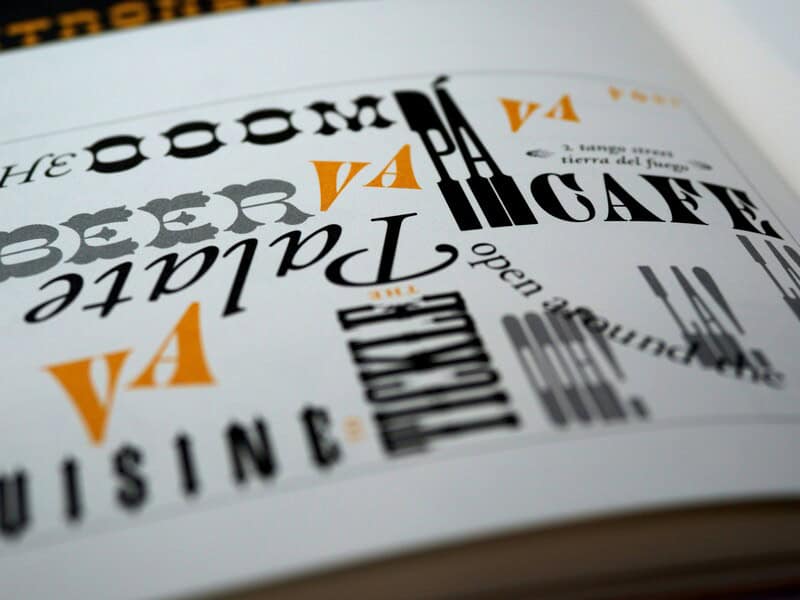Choosing the Best Font for Your Signs: A Comprehensive Guide

In today’s visually driven world, the effectiveness of your sign can make a significant impact on your business or event. One of the crucial elements in creating an impactful sign is choosing the right font. The best font for signs should be easily readable, reflect your brand, and convey your message clearly. This guide will help you understand the key factors to consider when selecting the best font for your signs.
Readability: The Most Important Factor
When it comes to signage, readability is paramount. Your sign needs to be easily read from a distance, in various lighting conditions, and sometimes at a glance. The following tips will help ensure your font is readable:
Contrast and Clarity
Ensure there is a high contrast between the text and the background of your sign. Dark text on a light background or light text on a dark background works best. Avoid using overly complex backgrounds that might obscure the text.
Font Weight and Simplicity
Opt for fonts that are bold and simple. Sans-serif fonts like Arial, Helvetica, and Futura are often recommended for signs because of their clean lines and straightforward design. These fonts are generally easier to read from a distance compared to serif fonts, which can appear cluttered due to their decorative strokes.
Spacing and Size
Proper spacing between letters (kerning) and lines (leading) is crucial for readability. Ensure there is enough space so that each letter and word is distinguishable. Additionally, the size of your font should be proportional to the distance from which it will be viewed. Larger signs for highways or large buildings will need significantly larger text than a sign in a small storefront window.
Font Style: Matching the Mood and Purpose
The style of the font you choose should align with the message you are trying to convey and the overall aesthetic of your brand or event. Here are some considerations for different contexts:
Formal vs. Informal
For a formal setting such as a corporate office, event, or upscale restaurant, fonts like Times New Roman or Garamond might be appropriate due to their classic and professional look. Conversely, for informal settings like a café, boutique, or children’s event, more playful fonts like Comic Sans (used sparingly) or handwritten styles can create a welcoming and relaxed atmosphere.
Modern vs. Traditional
Modern fonts like Gotham or Lato offer a sleek and contemporary feel, which is perfect for tech companies, modern retail stores, and innovative brands. Traditional fonts, such as Baskerville or Georgia, provide a timeless look suitable for legal offices, academic institutions, or historical sites.
Themed Fonts
For themed events or locations, selecting a font that matches the theme can enhance the overall experience. For instance, a pirate-themed restaurant might use a font that resembles old map writing, while a futuristic exhibit might opt for a sci-fi inspired typeface.
Size and Placement: Ensuring Visibility
The size of your font and its placement on the sign are just as important as the font choice itself. Consider the following tips for maximizing visibility:
Viewing Distance
Determine the average viewing distance for your sign. A general rule of thumb is that for every 10 feet of viewing distance, your text should be at least 1 inch tall. This means that if your sign will be viewed from 100 feet away, the text should be at least 10 inches tall.
Hierarchy and Emphasis
Create a hierarchy in your sign’s text to guide the viewer’s eye. The most important information, such as the business name or event title, should be the largest and boldest. Secondary information, like dates or taglines, should be smaller but still readable. This approach ensures that the key message is conveyed quickly and clearly.
Placement and Orientation
Ensure your sign is placed in a location where it will be most visible to your target audience. This could mean placing it at eye level, ensuring it is not obstructed by other objects, and orienting it towards high traffic areas. If your sign is outdoors, consider weather conditions and potential obstructions like trees or other buildings.
Branding and Consistency: Creating a Cohesive Look
Your font choice should not only be readable and stylish but also consistent with your overall branding. Here’s how to ensure your sign integrates seamlessly with your brand:
Consistent Branding
Use the same fonts across all your marketing materials to create a unified brand identity. This includes your website, brochures, business cards, and signs. Consistency helps reinforce brand recognition and trust.
Color Scheme
Ensure that the colors used in your sign complement your brand’s color scheme. This includes the color of the font and the background. Your chosen colors should work together to maintain readability while also staying true to your brand’s visual identity.
Custom Fonts
For a truly unique look, consider commissioning a custom font that embodies your brand’s personality. This can set your signs apart from competitors and leave a lasting impression on your audience. However, ensure that any custom font is still legible and functional as a sign font.
Choosing the best font for signs is a blend of art and science. It requires a careful balance between readability, style, size, placement, and brand consistency. By considering these factors, you can create signs that not only capture attention but also effectively communicate your message and enhance your brand’s presence. Request a quote today!
Three Locations to Serve You
Charleston, SC
(843) 552-2626
Columbia, SC
(803) 731-2001
Jacksonville, FL
(904) 724-4321



0 Comments